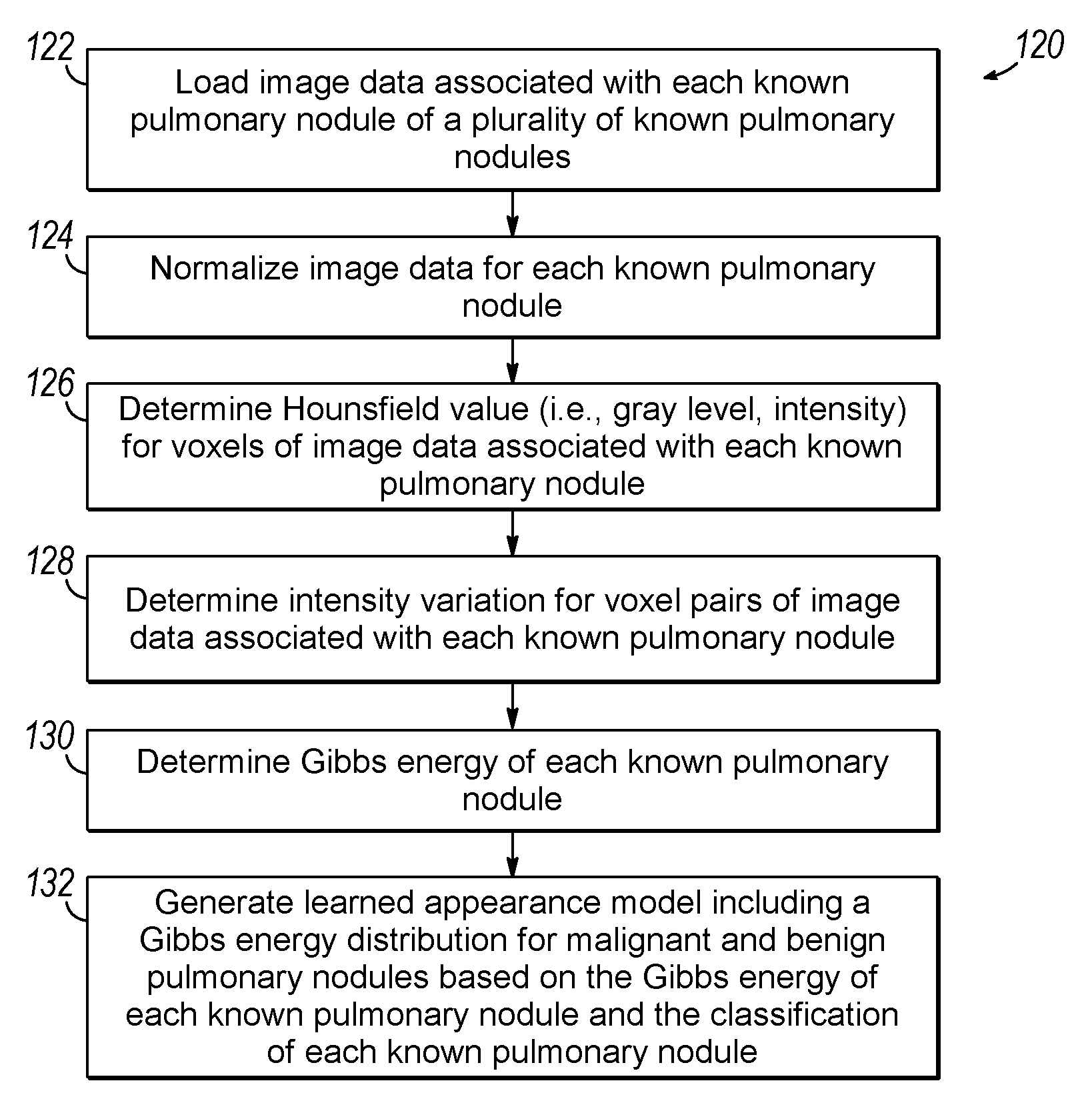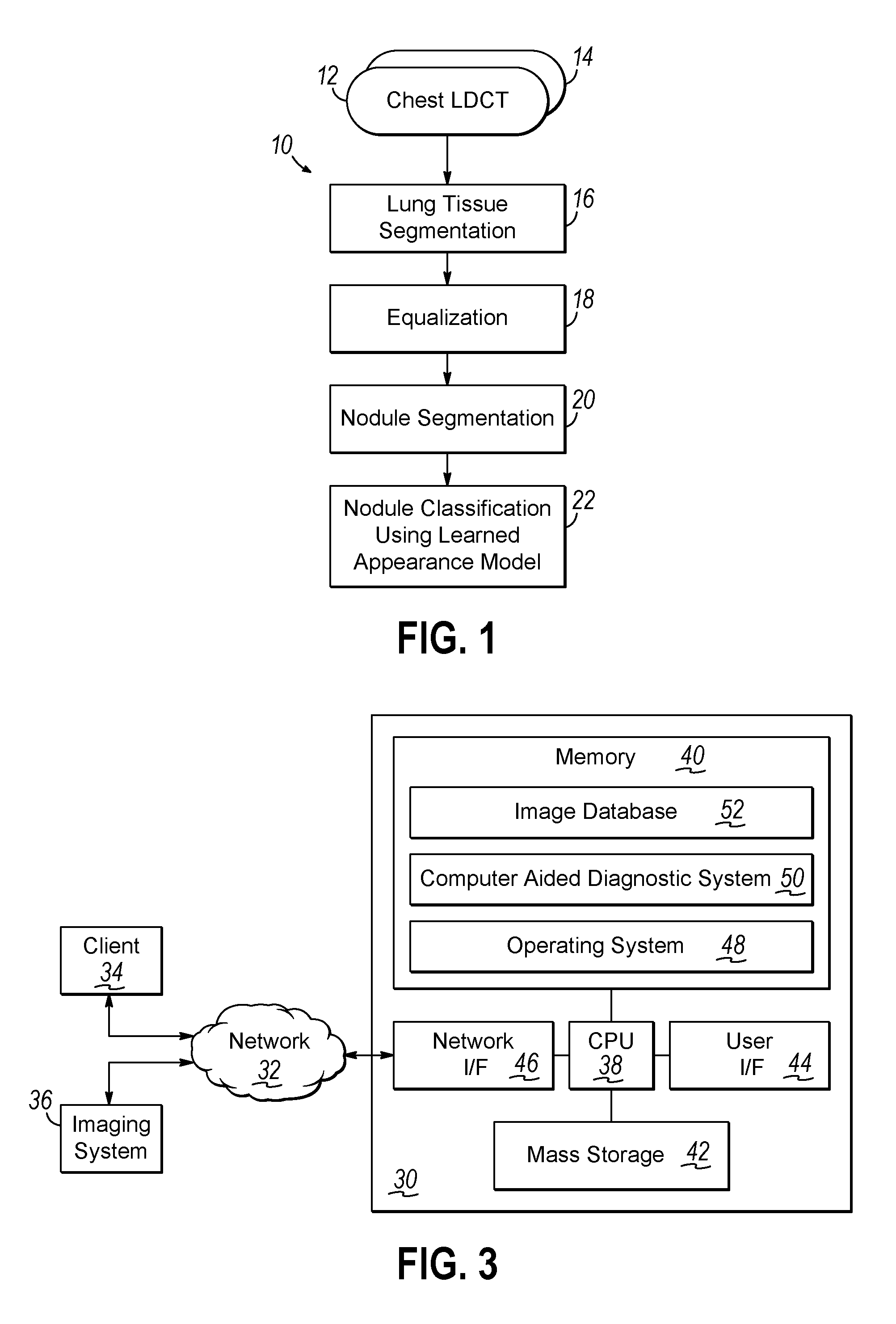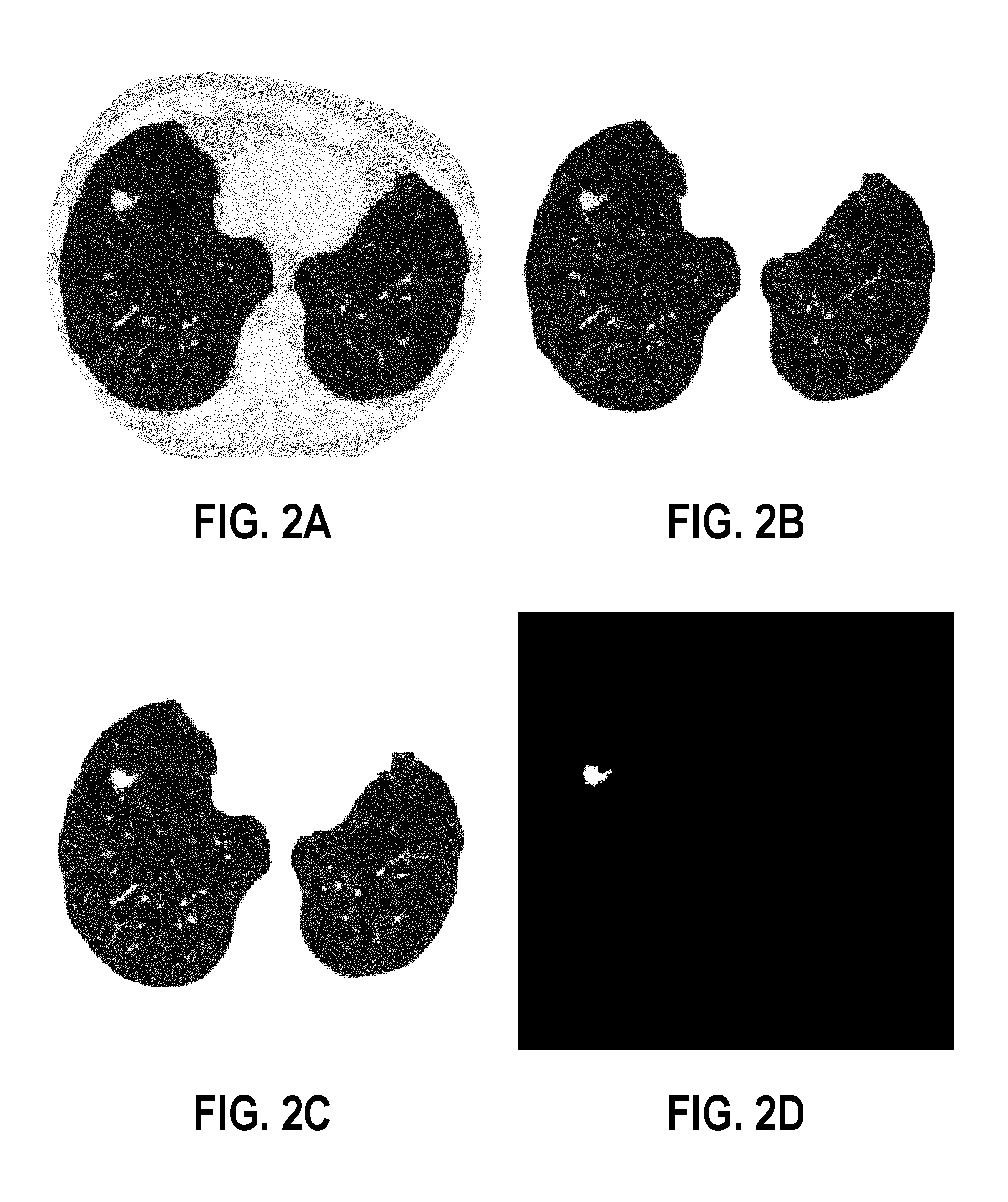Computer aided diagnostic system incorporating appearance analysis for diagnosing malignant lung nodules
a computer-aided diagnostic system and appearance analysis technology, applied in image analysis, image enhancement, instruments, etc., can solve the problems of reducing mortality rates, difficult to distinguish true nodules from shadows, and difficulty in computer-aided image data search schemes,
- Summary
- Abstract
- Description
- Claims
- Application Information
AI Technical Summary
Benefits of technology
Problems solved by technology
Method used
Image
Examples
working example
[0054]To justify the proposed methodology of learning the 3D appearance (i.e. spatial distribution of Hounsfield values) of both malignant and benign nodules after normalizing the image signals, the above appearance analysis was pilot-tested on a database of clinical multislice 3D chest LDCT scans of 109 lung nodules (51 malignant nodules and 58 benign nodules). The scanned CT data sets have each 0.7×0.7×2.0 mm3 voxels, the diameters of the nodules ranging from 3 mm to 30 mm.
[0055]FIGS. 8A-8I and 9A-9I respectively show the conditional voxel-wise Gibbs energies describing the 3D appearance of both malignant (FIGS. 8A-8I) and benign (FIGS. 9A-9I) pulmonary nodules. FIGS. 8A, 8B and 8C illustrate original LDCT images of a lung taken in axial (FIG. 8A), saggital (FIG. 8B) and coronal (FIG. 8C) planes. FIGS. 8D, 8E and 8F illustrate image data of nodules segmented with the method described in the aforementioned article entitled “Appearance models for robust segmentation of pulmonary nod...
PUM
 Login to View More
Login to View More Abstract
Description
Claims
Application Information
 Login to View More
Login to View More - R&D
- Intellectual Property
- Life Sciences
- Materials
- Tech Scout
- Unparalleled Data Quality
- Higher Quality Content
- 60% Fewer Hallucinations
Browse by: Latest US Patents, China's latest patents, Technical Efficacy Thesaurus, Application Domain, Technology Topic, Popular Technical Reports.
© 2025 PatSnap. All rights reserved.Legal|Privacy policy|Modern Slavery Act Transparency Statement|Sitemap|About US| Contact US: help@patsnap.com



